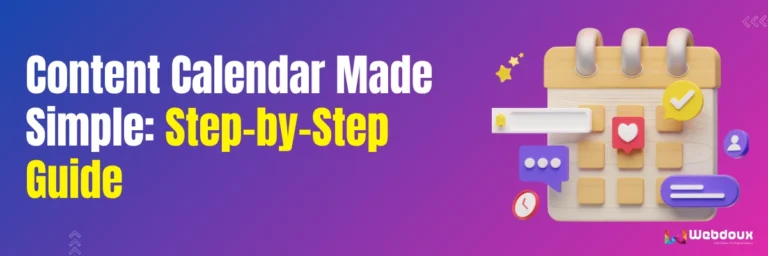
02 JULY Content Calendar Made Simple: Step-by-Step Guide
In today’s fast-paced digital world, creating and managing content can feel overwhelming. Between social media posts, blogs, email newsletters, and campaigns, keeping track of everything without a proper system is tough. That’s where a content calendar comes in—a simple yet powerful tool that helps you stay organized, consistent, and effective.
In this step-by-step guide, we’ll break down exactly how to create and manage a content calendar that simplifies your marketing efforts.
What is a content calendar?
A content calendar is a schedule that outlines what content you’ll publish, when, and where. Think of it as your content roadmap—it ensures your ideas, deadlines, and publishing dates are neatly organized in one place.
Whether you’re a marketer, business owner, or freelancer, a content calendar saves time and keeps your strategy focused.
Why You Need a Content Calendar
Here are some clear benefits of using one:
Consistency: Stay active across platforms without gaps.
Clarity: Know exactly what’s coming up and avoid last-minute rushes.
Team Collaboration: Keeps everyone aligned on tasks and timelines.
Better Planning: Helps align content with campaigns, events, or launches.
Tracking & Optimization: Makes it easier to review performance and improve.
Step-by-Step Guide to Creating a Content Calendar
1. Define Your Goals
Before creating the calendar, ask: What do I want my content to achieve?
Increase brand awareness?
Drive website traffic?
Generate leads?
Your goals shape the type of content you’ll plan.
2. Choose the Right Platforms
Decide where you want to publish:
Social media (Instagram, LinkedIn, Facebook, X, YouTube, etc.)
Blog/website
Email newsletters
Podcasts or video channels
Not every platform is necessary—focus on where your audience is most active.
3. Brainstorm Content Ideas
List out themes and content types:
Blogs
Reels/short videos
Infographics
Case studies
Tutorials & guides
Customer stories
💡 Pro Tip: Use audience FAQs, trending topics, or seasonal events to inspire content ideas.
4. Pick a Content Calendar Tool
You can keep it simple or go advanced:
Simple: Google Sheets, Excel, Trello
Advanced: Notion, Asana, ClickUp, or CoSchedule
Choose what’s easiest for your workflow.
5. Plan Your Publishing Frequency
Decide how often you’ll post. Example:
Blog: 2 posts per week
Instagram: 4 posts per week
LinkedIn: 3 posts per week
Consistency matters more than quantity—set a realistic schedule.
6. Build Your Calendar Layout
Your calendar should include:
Content title/idea
Platform
Date & time of publishing
Responsible team member
Status (Draft, In Review, Scheduled, Published)
Notes (hashtags, keywords, links, visuals, etc.)
7. Assign Roles & Responsibilities
If you’re working with a team, define who does what:
Content writer
Graphic designer
Video editor
Social media manager
Approver
This avoids confusion and delays.
8. Create Content in Batches
Batch creation saves time. Example:
Write all your blog drafts for the month in one go.
Design social posts for 2 weeks together.
Record multiple videos in one session.
9. Schedule & Automate
Use scheduling tools like Buffer, Hootsuite, Later, or Meta Business Suite to publish automatically. This ensures consistency even during busy periods.
10. Track & Improve
A calendar isn’t just for planning—it’s also for analyzing. Track:
Engagement (likes, shares, comments)
Traffic & conversions
Best performing formats
Use these insights to refine your future content strategy.
Example of a Simple Content Calendar (Weekly View)
| Date | Platform | Content Type | Topic/Title | Status | Owner |
|---|---|---|---|---|---|
| Sept 10 | Blog | Article | How to Create a Content Calendar | Draft | Writer |
| Sept 11 | Reel | Quick Productivity Hacks | Scheduled | Designer | |
| Sept 12 | Post | Client Success Story | Review | Manager |
Following these practices will keep your content lively and useful:
- Margin of flexibility: Leave room for trending or reactive content.
- Reuse and repurpose: Convert a blog to a social post and a webinar to a YouTube video.
- Set reminders: Automate deadlines and review notifications.
- Review every three months: Update your planning every three months to keep it aligned with business changes.
- Colour codes: Use colour codes to identify formats or themes quickly.
Conclusion
A content calendar isn’t complicated—it’s about creating a system that makes your marketing efforts organized and stress-free. By following these steps, you’ll not only stay consistent but also deliver meaningful content that connects with your audience.
Start simple, refine as you go, and let your calendar be the backbone of your content strategy.
WhatsApp us
